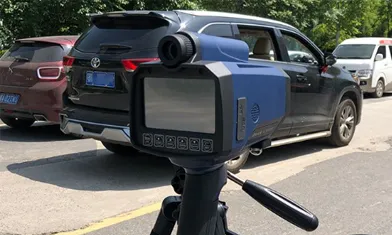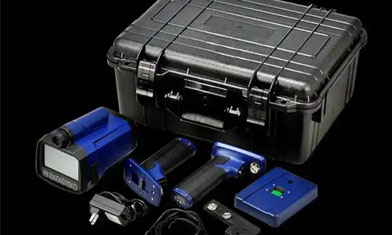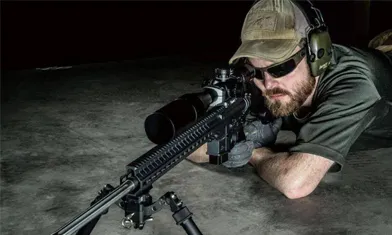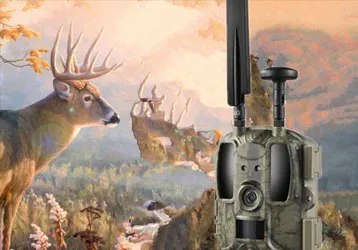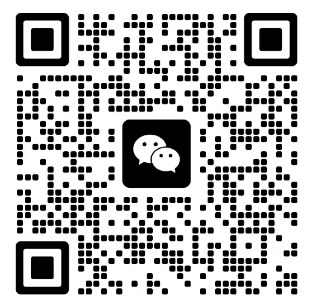Применение инфракрасного тепловидения в области безопасности
In recent years, infrared thermal imaging technology has become increasingly important in the field of security applications.
Application 1: Monitoring targets at night and under adverse weather conditions
At night, as we all know, visible light equipment can no longer work properly. If artificial lighting is used, it is easy to expose the target. If a low-light night vision device is used, it also works in the visible light band and still requires external light illumination. Infrared thermal imaging passively accepts the infrared thermal radiation of the target itself, and can work normally regardless of day or night, and will not expose itself. Similarly, in adverse weather conditions such as rain and fog, due to the short wavelength of visible light and poor ability to overcome obstacles, the observation effect is poor, but the wavelength of infrared light is longer, and the thermal imager has a higher ability to penetrate rain and fog, so it can still observe the target normally. Therefore, at night and in adverse weather conditions, infrared thermal imaging monitoring equipment can be used to monitor various targets such as personnel and vehicles.
Example: [#Sixty-year-old man was caught stealing Mingqian tea in the middle of the night by thermal imaging#] (March 23, 2022) At around 5 a.m., in Shuangfeng Village, Hangzhou, two figures squatted in the tea field of Mingqian tea, looking suspicious. During the inspection, the local village secretary used infrared thermal imaging equipment to take clear photos of the two people and then intercepted them. It is understood that the two are about sixty years old. It may be because the price of West Lake Longjing Mingqian tea is high during this period, so they went to the tea field to steal tea. At present, the two have been sent to the local police station.
Application 2: Fire monitoring
Since infrared thermal imaging is a device that reflects the surface temperature of an object and forms an image, it can be used as an effective fire alarm device in addition to being used for on-site monitoring at night. In large areas of forest, fires are often caused by inconspicuous hidden fires. This is the root cause of devastating fires. It is difficult to detect such hidden fire signs using existing common methods. The application of infrared thermal imaging can quickly and effectively detect these hidden fires, and can accurately determine the location and scope of the fire, find the fire point through the smoke, and achieve early prevention and early extinguishing.
After the fire is extinguished, the scene with heavy smoke and poor visibility is difficult for human eyes and visible light cameras to detect. However, the use of infrared thermal imagers can monitor the temperature of the forest surface after the fire and find hidden sporadic fires, so as to facilitate timely firefighting measures and control the recurrence of fire.
Infrared thermal imaging technology is based on temperature field infrared imaging temperature measurement. It is currently a high-tech field of predictive maintenance and an effective and efficient means of preventing fire disasters. It is an important means for developed countries to prevent fires and explosions in various industries, electricity, petrochemicals and dangerous goods!
Infrared thermal imaging also has incomparable advantages in disaster relief after disasters. On the one hand, handheld infrared thermal imagers can be equipped to firefighters for on-site rescue, so as to avoid dangerous areas as much as possible for self-rescue and rescue.
In the traditional fire search and rescue process, when the fire scene is filled with thick smoke and visibility is extremely low, firefighters rely on touch, feel and listen, blindly moving forward in the thick smoke, trying to save lives. Firefighters without thermal imagers take up too much of the already limited rescue time in the thick smoke to carefully walk and search, avoid obstacles, find doors and spaces, and this delay greatly reduces the chances of rescue for those waiting for rescue.
If infrared thermal imagers are used, firefighters can quickly find people waiting for rescue. At the same time, the danger of firefighters is relatively reduced because they spend less time in dangerous environments. In such a complex environment, they can clearly find all possible dangers that coexist with their work. Infrared rays have a very strong ability to penetrate thick smoke, allowing us to easily find all heat sources, such as people waiting for rescue, flames or other dangers. Thermal imagers have been on the market for a long time, and their superior performance has been fully proven.
Infrared thermal imaging directly finds fire hotspots that cannot be seen by visible light (the red part in the picture)

Application three: camouflage and identification of hidden targets
Ordinary camouflage is mainly to prevent visible light observation. Generally, criminals usually hide in the grass and woods when committing crimes. Due to the harsh outdoor environment and human visual illusion, it is easy to make wrong judgments. Infrared thermal imaging devices passively receive the target's own thermal radiation. The temperature and infrared radiation of the human body and vehicles are generally much greater than the temperature and infrared radiation of grass and trees. Therefore, it is not easy to disguise and it is not easy to make wrong judgments.

Infrared thermal imaging technology is now widely used in forest fire prevention, water conservancy, maritime, public security, transportation, armed police, customs and other departments in important fields such as night patrol, detection, evidence collection, road law enforcement, security and anti-smuggling, drug control, anti-pornography and anti-terrorism; used in night monitoring and security work of banks, vaults, cultural relics, important materials and warehouses. In the fight against criminals and counter-espionage to protect national security, night vision products are also one of the important monitoring and surveillance means. In other fields, whenever you need to work in dark places, such as photosensitive chemical industry, seabed resource exploration, monitoring of offshore oil drilling platforms, deep-sea fishing, environmental monitoring, etc., they are important evidence collection tools.
